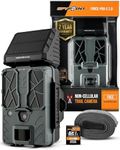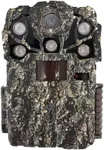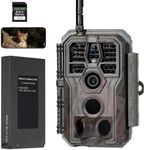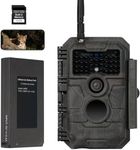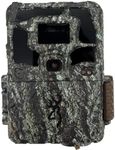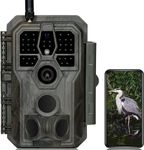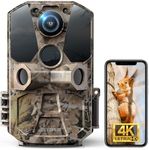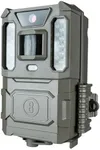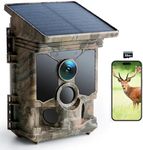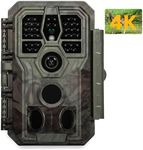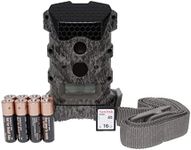Buying Guide for the Best Wildlife Cameras
When choosing a wildlife camera, it's important to consider the specific needs of your wildlife observation or photography project. Wildlife cameras, also known as trail cameras, are used to capture images and videos of animals in their natural habitat without human interference. The right camera for you will depend on factors such as the environment you'll be using it in, the type of wildlife you're interested in, and the level of detail you want in your images or videos. Understanding the key specifications will help you make an informed decision and ensure you get the best results from your wildlife camera.ResolutionResolution refers to the number of pixels in each image captured by the camera, typically measured in megapixels (MP). Higher resolution cameras produce clearer and more detailed images, which is important if you want to capture fine details of wildlife or if you plan to print large photos. Cameras with resolutions ranging from 8MP to 20MP are common, with higher resolutions offering better detail. If you're primarily using the camera for online sharing or small prints, a lower resolution may suffice. However, for detailed study or large prints, opt for a higher resolution.
Trigger SpeedTrigger speed is the time it takes for the camera to take a photo after detecting motion. This is crucial for capturing fast-moving animals. A faster trigger speed increases the likelihood of getting a clear shot of an animal as it moves through the camera's field of view. Trigger speeds can range from less than 0.2 seconds to over 1 second. For capturing quick animals like birds or small mammals, a trigger speed of less than 0.5 seconds is ideal. For slower or larger animals, a slightly slower trigger speed may be acceptable.
Detection RangeDetection range is the distance at which the camera can detect motion and trigger a photo or video. This is important for covering a larger area and capturing animals from a distance. Detection ranges can vary from 50 feet to over 100 feet. If you're monitoring a large open area, a longer detection range is beneficial. For smaller, more confined spaces, a shorter range may be sufficient. Consider the typical distance of wildlife in your area when choosing the detection range.
Battery LifeBattery life determines how long the camera can operate before needing a battery replacement or recharge. This is important for minimizing maintenance and ensuring continuous operation, especially in remote locations. Battery life can vary significantly based on usage, with some cameras lasting a few weeks and others several months. If you plan to leave the camera unattended for long periods, look for models with extended battery life or options for external power sources. Consider the climate and activity level in the area, as these can affect battery performance.
Night VisionNight vision capability allows the camera to capture images in low light or complete darkness, which is essential for nocturnal wildlife observation. This is typically achieved through infrared LEDs that illuminate the scene without disturbing animals. Cameras may offer different levels of night vision quality, with some providing clearer images than others. If you expect to capture a lot of nighttime activity, prioritize cameras with strong night vision capabilities. Consider the balance between image quality and the potential for visible light that might disturb wildlife.
Weather ResistanceWeather resistance refers to the camera's ability to withstand various environmental conditions such as rain, snow, and extreme temperatures. This is crucial for outdoor use, ensuring the camera remains functional in different weather conditions. Cameras are often rated with an IP (Ingress Protection) code, indicating their resistance to dust and water. For use in harsh environments, look for cameras with higher IP ratings. Consider the typical weather conditions in your area and choose a camera that can handle those conditions reliably.
